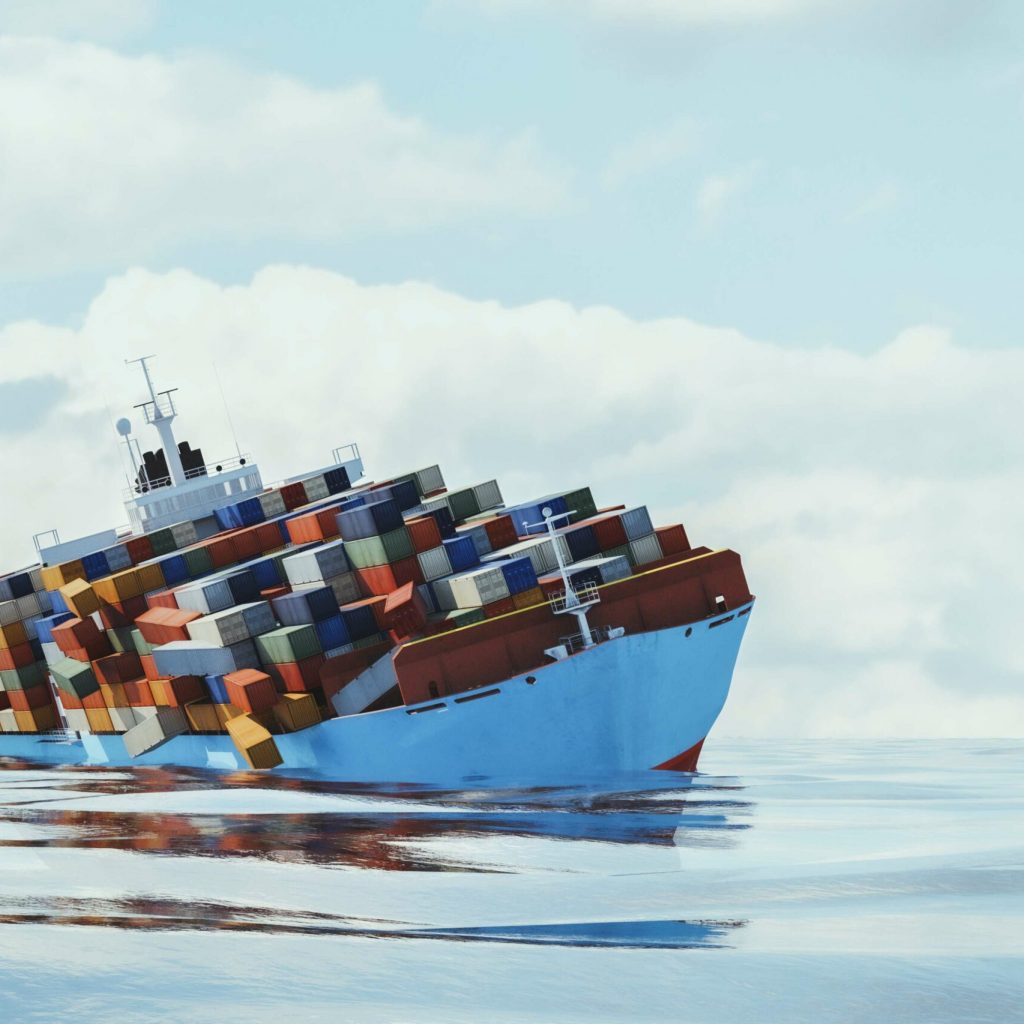Concirrus’ event response team analyses key events as soon as they occur to better understand changing circumstances. This article draws on their analysis to discuss accumulations during Hurricane Ida.
Hurricane Ida made landfall on August 29th and moved up through the region of New Orleans in the early hours of August 30th. Action was taken given the prediction of the hurricane’s arrival, highlighted in Fig 1. This reduced overall Hull & IV accumulation for three major regional ports (Fourchon, New Orleans, and South Louisiana) by 63.29%. The estimated total sum insured across these ports on 25th August 2021 was $3157m. This fell to $1159m over August 29th and 30th.

Fig 1: Vessel population across Ports Fourchon, New Orleans and South Louisiana, August 25th – 31st 2021
A breakdown these three ports outlines the changes that took place.
Port Fourchon
Port Fourchon was the first to experience the hurricane. We can see that preventative measures were clearly taken with a significant difference in vessel activity before and after August 28th. Estimated total Hull & IV sum insured moves from $1,606m to $301m in the space of five days.

Fig 2: Vessel movement through Port Fourchon from August 25th – 31st 2021
We can see a significant shift in vessel distribution, with a reduction in platform supply ships totalling 81.99% of the change in accumulation. On the date of the hurricane, 25 vessels remained in port. The most significant of which were still platform supply ships, with the 6 remaining contributing to 35.88% of Hull & IV accumulation.
.png?width=965&name=Port%20Fourchon%20Aug%2025th%20Vessel%20breakdown%20(b).png)
Fig 3: Vessel accumulation at Port Fourchon on 25th August 2021
An increased population of tug class vessels in the days leading up to and during the hurricane reflects their need to support the movement of other vessels like platform supply ships.
-PNG-1.png?width=962&name=Port%20Fourchon%20Aug%2029th%20Vessel%20breakdown%20(b)-PNG-1.png)
Fig 4: Vessel accumulation at Port Fourchon on 29th August 2021
New Orleans
Similar behaviour is seen in the port of New Orleans, with vessel movement up to and on the day reflecting preventative measures. Activity in the days leading up to the storm saw approx. a 30% reduction in total stationary vessels (August 25th – 30th). The result of such activity is a drop in the estimated sum inured, reducing accumulative Hull & IV estimated total sum insured from $704m to $409m.

Fig 5: Vessel movement through the Port of New Orleans from August 25th – 31st 2021
Using Concirrus’ model, we can see the value split of vessels in the port on both August 25th and 30th 2021.
-png.png?width=962&name=Port%20of%20New%20Orleans%20Aug%2025th%20Vessel%20breakdown%20(b)-png.png)
Fig 6: vessel accumulation in the Port of New Orleans on 25th August 2021
54.24% of the $295m reduction in accumulation came from chemical/oil product tankers, reducing the estimated total sum insured by $160m as they all left port. 44.07% of changing accumulation was attributed to bulk carriers, reducing the overall estimated total sum insured by $130m. The increased presence of pusher tugs denoted their use in helping move such vessels in the lead up to the event. During the event, tugs and pusher tugs alone totalled 48.17% of Hull & IV accumulation.

Fig 7: vessel accumulation in the Port of New Orleans on 30th August 2021
South Louisiana
The port of South Louisiana saw very similar behaviour, focussing on a reduction in stationary vessels to lower the estimated total sum insured by $304m.

Fig 8: Vessel movement through the Port of South Louisiana from August 25th – 31st 2021
Comparing vessel distribution in port from August 25th to 30th shows that Hull & IV accumulation reduced by $304m. A reduction in chemical tankers led to 41.12% of this variance, whilst crude oil tankers contributed 23.36%.
-png.png?width=961&name=Port%20of%20South%20Louisiana%20Aug%2025th%20Vessel%20breakdown%20(b)-png.png)
Fig 9: vessel accumulation in the Port of South Louisiana on 25th August 2021
Bulk carriers were the most prominent vessel in port on 30th August 2021 with 75.69% of total Hull & IV accumulation. These carriers were mid-sized for their class, mainly shorter vessels with lower freeboards. Unlike the last two ports, pusher tugs were not left in port, however the general tug population remained consistent.
-PNG-1.png?width=963&name=Port%20of%20South%20Louisiana%20Aug%2030th%20Vessel%20breakdown%20(b)-PNG-1.png)
Fig 10: vessel accumulation in the Port of South Louisiana on 30th August 2021
“As would be expected, most IMO vessels implemented their respective Hurricane plans and avoided the worst of the weather with Hurricane Ida. For vessels which didn’t move out of the storm track, underwriters may look to brokers and clients for explanations, whether it’s in response to a claim, or at next renewal. Further considerations may be required for underwriters in relation to how they monitor their Cat exposed Hull aggregations in relation to their overall Cat Reinsurance programs.” – Dermot O’Flynn, Client Delivery Manager at Concirrus.
For more on Concirrus’ approach to event response, get in touch.
